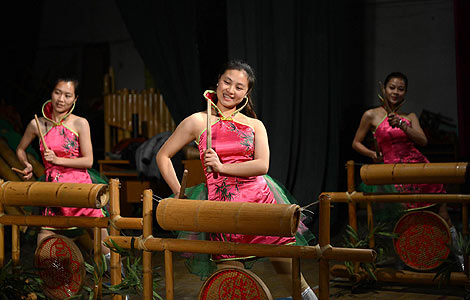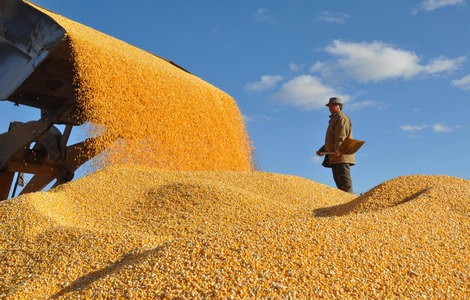
China's domestic cotton consumption is positive this year despite its economic slowdown, the Cotton Council International, the export promotion arm of the US National Cotton Council, has said.
"We are very optimistic about China's retail market," said Karin Malmstrom, China director of CCI. "According to our surveys, we are seeing a growing middle class in China that is willing to pay more money for natural fibers, such as cotton."
Cotton demand in China, the world largest user, may rebound this year. Consumption may rise to 9.58 million metric tons this year from an estimated 9 million tons in 2011 amid a recovery in the textile industry, said the Hong Kong-listed Weiqiao Textile Co, China's biggest cotton textile manufacturer, on its website.
Although cotton demand is rising, output of the fiber is not increasing. "In 2012, domestic cotton production is not optimistic as decreasing planting areas as well as increasing labor costs, low level of mechanization and narrowed production," said Zhou Shengtao, director of China Cotton Association.
A recent cotton association survey concluded farmers are likely to reduce their planting area by almost 17 percent this year because of the rising costs of labor, fertilizer and seed.
According to the International Cotton Advisory Committee, the area of cotton fields worldwide is expected to decrease by 7 percent to 33.6 million hectares in response to lower prices. The decline in the supply of raw cotton will be driven by China, which is expected to produce a 6.4 million ton cotton crop, 13 percent less than last year.
But China still needs millions of tons of cotton to feed its mills, which produce 40 percent of the world's cotton goods. And with global prices cheaper than domestic and the domestic textile industry recovering, Chinese mills will be looking for more imports, industry analysts said.
China's cotton imports may jump by 54 percent to 18.5 million 480-pound bales (4 million tons) this year, the most in the six years, according to a March estimate by the US Department of Agriculture.
"China has huge domestic market demand. … So its cotton industry should be based mainly on the domestic market and improvement of international competitiveness," said Zhou with CCA.
"The appreciation of the yuan and rising labor and transportation costs have affected China's competitiveness in the global low-end textile market compared with India and Bangladesh," said Weiqiao Textile said on its website. "We are trying to boost sales in the domestic market and also upgrade our goods to better compete in the high-end market."







